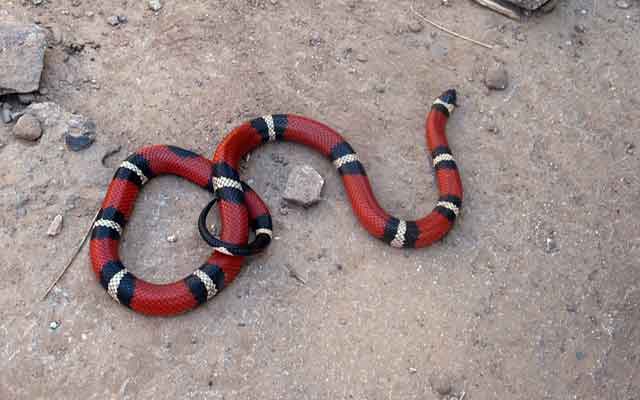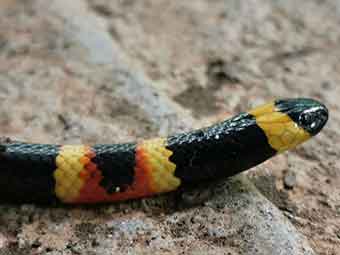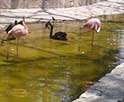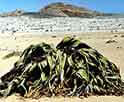.
How to Spot Deadly Coral Snakes Quickly
Coral Snake vs. Kingsnake: Know the Difference Before You React
Reading time : 1 minute,
Discovery Chepe Id-385-ECO
Published in
07-06-2024

Coral snake species are found in tropical and subtropical regions of America, including Mexico, Central America, the Caribbean and South America. There are around 60 species of coral snakes belonging to the genus Micrurus. In the image, imitator snake or false coral.
How to spot a Coral Snake? identification guide: Stay safe in the wild. Coral snakes, known for their striking red, yellow and black rings, are common inhabitants of tropical and subtropical regions of the Americas. Despite their beauty, they are highly poisonous creatures, so it is crucial to know how to differentiate them from their non-venomous imitators to avoid accidents.
Identifying the true deadly coral:
1- Ring pattern: The ring pattern in the coral snake follows the rule "red next to yellow, kills you instantly", or "Red Touch Yellow, Kills a Fellow". This means that each red ring is bordered by a yellow ring, while the black rings are separated from the red ones by yellow.
Red Touch Yellow, Kills a Fellow? The Truth About Coral Snakes

(In the image, a real coral snake.)
2-Rings on the belly: Look at the belly of the snake. In true corals, the colored rings continue to the belly forming complete bands. In imitations, the belly rings are incomplete or absent.
3-Eye size: Coral snakes have small eyes in relation to the size of their head. Imitators, on the other hand, tend to have larger eyes.
4-Black head: The head of the coral snake is usually completely black, without additional markings. Imitators may have spots or stripes on their heads.
Common imitator snakes:
a) False coral snake: The most common imitator, with red, black and yellow rings, but following the pattern "red next to black, friend of my people."
b) Scarlet snake: It has black and red rings, without yellow, and its head is red.
c) Milk snake: It has black and red rings bordered by white, and its belly is white or cream.
d) d) King snake: A common name in some regions, although it can cause confusion with other species.
Recommendations:
· Avoid contact: The best thing to do with any unknown snake is to keep your distance and not try to manipulate it.
· Observe from afar: Use binoculars or a telephoto lens to observe the snakes in greater detail.
· Learn more: Familiarize yourself with the snakes in your region and their distinctive characteristics.
· When in doubt, back away: If you are unsure whether a snake is venomous or not, it is best to walk away with caution.
Remember, caution and knowledge are key to enjoying nature safely. Enjoy the beauty of snakes without putting your safety at risk!
Most read...
See Also
Discovery Chepe















